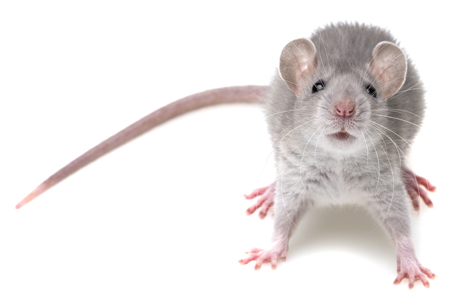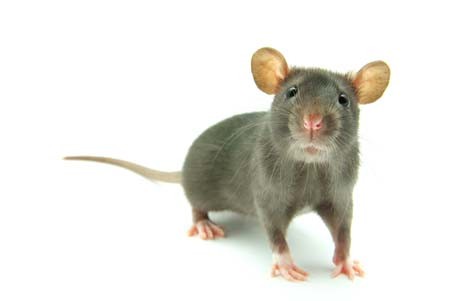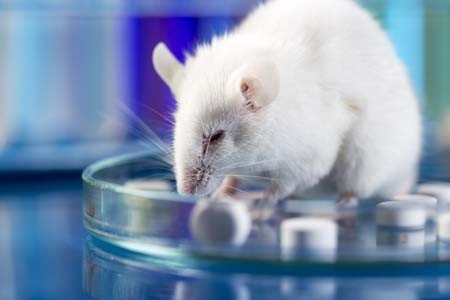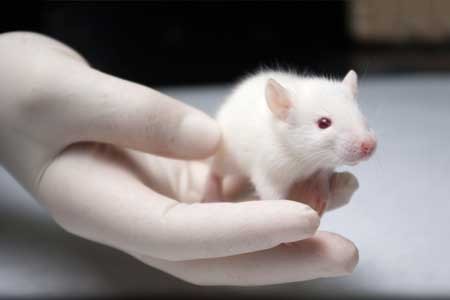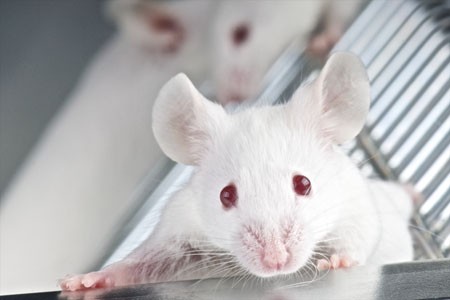Neurotransmitters Can Also Function As Epigenetic Marks
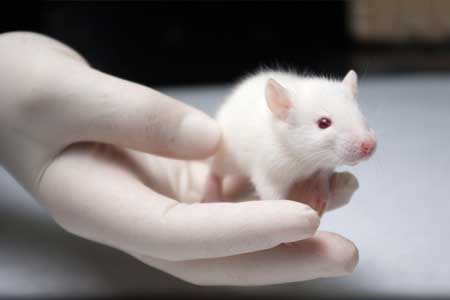
The most common epigenetic marks involve methylation of DNA (which usually inhibits gene transcription) and the acetylation and methylation of histones. Acetylation opens or loosens the winding of DNA around the histones and facilitates transcription, while methylation of histones leaves the DNA tightly wound and inhibits transcriptional activation.
Researcher Ashley E. Lepack and colleagues have identified a surprising type of epigenetic mechanism involving neurotransmitters. They report in a 2020 article in the journal Science that neurotransmitters such as serotonin and dopamine can act as epigenetic marks. Dopamine can bind to histone H3, a process called called dopaminylation (H3Q5dop). In rats undergoing withdrawal from cocaine, Lepack and colleagues found increased levels of H3Q5dop in dopamine neurons in a part of the midbrain called the ventral tegmental area (VTA), a part of the brain’s reward system. When the investigators reduced H3Q5dop, this decreased dopamine release in the reward area of the brain (the nucleus accumbens) and reduced cocaine seeking. Thus, dopamine can be both an important transmitter conveying messages between neurons and a chemical mark on histones that alters DNA binding and transcriptional regulation.
Researcher Jean-Antoine Girault provided commentary on the article by Lepack and colleagues, writing that “[t]he use of the same monoamine molecule as a neurotransmitter and a histone modification in the same cells illustrates that evolution proceeds by molecular tinkering, using available odds and ends to make innovations.”
Editor’s Note: Epigenetic marks may remain stable and influence behavior over long periods of time. They are involved in the increased reactivity or sensitization to repeated doses of cocaine through DNA methylation. Such sensitization can last over a period of months or longer. If the methylation inhibitor zebularine is given, animals fail to show sensitization. Now a newly identified epigenetic process, dopaminylation, is found to alter histones and is associated with long-term changes in cocaine-seeking.
The clinical message for a potential cocaine user is ominous. Cocaine not only creates a short-term “high,” but its repeated use rewires the brain not only at the level of changes in neurotransmitter release and receptor sensitivity, but also at the genetic and epigenetic level, changes that could persist indefinitely.
The sensitization to motor hyperactivity and euphoria that occur with cocaine use can progress to paranoia and panic attacks and eventually even seizures (through a process known as kindling).
The dopaminylation of histones in the VTA could lead to persistent increases in drug craving and addiction that may not be easily overcome. Thus, the appealing short-term effects of cocaine can spiral into increasingly adverse behaviors and drug-seeking can become all consuming. While these adversities do not emerge for everyone, the best way to ensure that they do not is to avoid cocaine from the start.
Manic episodes that include a feeling of invincibility, increased social contacts, and what the DSM-5 describes as “excessive involvement in pleasurable activities that have a high potential for painful consequences” are a time that many are at risk for acquiring a substance problem. For the adolescent who has had a manic episode, ongoing counseling about avoiding developing this type of additional long-term, difficult-to-treatment psychiatric illness could be lifesaving. Describing the epigenetic consequences of substance use may or may not be helpful, but may be worth a try.
In Animal Model, Long-Term THC Exposure Interferes with Cortical Control of the Nucleus Accumbens

In an article in the journal Biological Psychiatry, researchers Eun-Kyung Hwang and Carl R. Lupica reported that in rats, long-term use of THC (tetrahydrocannabinol) weakens input from the cortex to the reward area of the brain, the nucleus accumbens (NAc). Long-term THC use also strengthens connections to the NAc from emotional control (limbic) regions, such as the basolateral amygdala and ventral hippocampus. Hwang and Lupica reason that this shift from cortical control of the NAc to limbic control likely contributes to the cognitive and psychiatric symptoms associated with cannabis use.
Editor’s Note: Street marijuana largely contains THC rather than CBD, the beneficial, anxiety-reducing component of cannabis. Cannabis products are being decriminalized, but it is important to remember that those with THC are linked to cannabis use disorder and increased susceptibility to psychiatric illness. Patients with bipolar disorder who use marijuana also have a more adverse course of illness than those who do not use it.
In Mice, Knockout of Circadian CLOCK Genes Resembles Mania
Colleen McClung reviewed and extended previous findings of hers that knocking out a gene known as CLOCK in mice could reproduce most aspects of bipolar mania, including symptoms such as hyperactivity; decreased sleep; less depression; more impulsivity, risk taking, and novelty seeking; and increased reward-seeking including substances such as cocaine, alcohol, and sucrose. This syndrome in mice can be reversed by giving the mice lithium and valproate.
Knocking out the CLOCK gene produced an increased firing rate and burst firing of dopamine neurons in the ventral tegmental area (VTA). Localized knockout of the CLOCK gene in the VTA alone also reproduced the increase in dopamine cell firing.
When McClung and colleagues knocked out CLOCK in the medial prefrontal cortex, the normal development of a type of neurons called GABAergic parvalbumin interneurons did not occur in adolescent mice, and in adulthood, certain neural nets did not mature, leading to increases in oxidative stress, mitochondrial and cellular dysfunction, and the behavioral abnormalities that resembled mania. This animal model thus gives insight into how a genetic deficit in circadian rhythm genes in humans could influence the timing of behavioral abnormalities starting in adolescence and lasting through adulthood.
Risk Gene for Bipolar Disorder Implicated in Depressed Behaviors and Abnormal Firing of GABA Neurons
At a 2018 scientific meeting and in a 2017 article in the journal PNAS, researcher Shanshan Zhu and colleagues reported that mice genetically engineered to lack the protein Ankyrin-G in certain neurons showed increases in depression- and mania-like behavior after being exposed to defeat stress (by repeatedly being placed in physical proximity to a larger, more aggressive mouse), which is often used to model human depression.
The researchers targeted the gene ANK3, which is responsible for the production of Ankyrin-G, and has been linked to bipolar disorder in genome-wide association studies. By manipulating the gene, they could eliminate Ankyrin-G in pyramidal neurons in the forebrain, a region relevant to many psychiatric disorders. Pyramidal neurons perform key brain functions, sending nerve pulses that lead to movement and cognition.
The missing Ankyrin-G affected sodium channels (which allow for the flow of sodium ions in and out of cells) and potassium channels. The neurochemical GABA (which typically inhibits nerve impulses) was also dysregulated, resulting in the kind of disinhibition seen in psychosis. Mice showed dramatic behavioral changes ranging from hyperactivity to depression-like behavior (e.g. giving up in a forced swimming test). The hyperactivity decreased when the mice were given treatments for human mania, lithium or valproic acid.
While mutations in the ANK3 gene may disturb sodium channels, another gene linked to depression and bipolar disorder, CACNA1C, affects calcium channels.
In a related study by researcher Rene Caballero-Florán and colleagues that was also presented at the meeting, mice were genetically engineered in such a way that interactions between Ankyrin-G and GABA Type A Receptor-Associated Protein (GABARAP) were disrupted, leading to deficits in inhibitory signaling. These deficits were partially corrected when the mice were treated with lithium.
The study by Caballero-Florán and colleagues used mice with a mutation known as W1989R in the ANK3 gene. Through a program that examines the genes of people with bipolar disorder, the researchers also identified a family with this genetic mutation, including a patient with type I bipolar disorder with recurrent mania and depression who has responded well to lithium treatment.
IL-6 in Blood and Bone Marrow Linked to Lack of Resilience to Stress
Rodents who are repeatedly defeated by larger animals often exhibit depression-like behaviors. In new research that researcher Georgia E. Hodes presented at the 2016 meeting of the Society of Biological Psychiatry, animals who are susceptible to these social defeat stress behaviors showed immune irregularities, including high levels of the inflammatory marker interleukin-6.
An intervention to prevent the mice from secreting interleukin-6 in blood and bone marrow took away their susceptibility to social defeat stress. When bone marrow from rodents with no interleukin-6 was transplanted into susceptible mice, the recipients showed resilience to social defeat stress. Conversely, a transplant from susceptible mice to those mice without IL-6 led to social defeat stress in the previously “immune” mice.
This research shows that the peripheral immune system, including blood and bone marrow, plays an important role in depression-like behaviors in mice.
Animal Studies Suggest That Oxytocin May Treat Addictions
Oxytocin, the hormone that promotes emotional bonding, also regulates a variety of behaviors. Two recent studies suggest that in rats, an injection of oxytocin can prevent drug-seeking behavior.
In the first study, researcher Gary Aston-Jones found that oxytocin reduced the rats’ interest in methamphetamine. The effect was strongest in the rats that started out with the strongest interest in the methamphetamine.
In the second study, researcher Luyi Zhou and colleagues determined that oxytocin also reduced cocaine-seeking behavior in rats. In addition, the oxytocin reversed changes in the brain’s glutamate signaling pathway that were caused by cocaine use.
Both studies, which were presented at the 2016 meeting of the Society of Biological Psychiatry, suggest that oxytocin is a promising potential treatment for drug addictions.
In Rats, Mother’s Exercise Habits Affect Those of Offspring
 A recent study suggests that when a mother rat exercises during pregnancy, her offspring will exercise more too.
A recent study suggests that when a mother rat exercises during pregnancy, her offspring will exercise more too.
In the study, published by Jesse D. Eclarinel and colleagues in The FASEB Journal, pregnant mother rats were placed in cages that each contained an exercise wheel. One group had access to a working wheel on which they could run. The other group had the same wheel, but it was locked so that they couldn’t use it for running. Daughters of the rats who ran during pregnancy ran more in adulthood (both at 60 days and 300 days after birth) than daughters of the rats who couldn’t run during pregnancy.
While it is a mystery why this occurs, it is consistent with other data about the ways that a parent’s experiences can influence the next generation, even when the offspring don’t grow up with the parents.
For example, father rats conditioned to associate a specific smell with fear of an electric shock have offspring that also fear that smell (but not other smells).
Drug use is another example. Father rats given access to cocaine have offspring that are less interested in cocaine. Interestingly, father rats exposed to marijuana have offspring that are more interested in opiates.
Experiences with drugs or stress are thought to affect the next generation via ‘epigenetic’ marks on ova or sperm. These marks change the way DNA is packaged, with long-lasting effects on behavior and chemistry. Most marks from a mother’s or father’s experiences are erased at the time of conception, but some persist and affect the next generation.
The nature versus nurture debate is getting more and more complicated. Parents can influence offspring in a number of ways: 1) genetics; 2) epigenetics in the absence of contact between parent and offspring after birth; 3) epigenetic effects of behavioral contact—that is, parents’ caring and warmth versus abuse and neglect can affect offspring’s DNA expression too. All these are in addition to any purely behavioral influence a parent may have on their offspring via discipline, teaching, being a role model, etc.
Editor’s Note: The moral of the story is, choose your parents wisely, or behave wisely if you yourself become a parent.
Lithium Treatment Reduces Inflammation, Mania-Like Behavior in Rats
Patients with bipolar disorder often show increases in signs of inflammation, including levels of the proteins IL-2, IL-4, Il-6, IL-10 and tumor necrosis factor in their blood. Lithium is the most effective treatment for bipolar disorder, but it is not yet clear how it works. A recent study by researcher Joao de Quevado and colleagues determined that lithium can reduce the same inflammatory markers in rats.
Rats were treated with amphetamine to induce mania-like behavior, which was accompanied by increases in some of the same inflammatory markers in the blood and brain that are increased in people with bipolar disorder. Lithium treatment reduced both the manic behavior and levels of these inflammatory proteins in the rats.
The researchers concluded that lithium may treat mania by reducing inflammation.
Mice Who Witness Another Being Attacked Show Depression-Like Behaviors
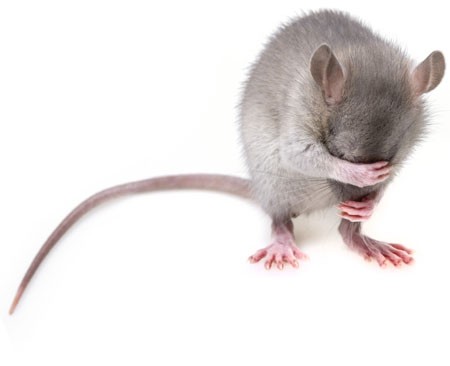 Stress is a risk factor for depression and other mental health disorders. Researchers are currently working to clarify how stress leads to depression, anxiety, and post-traumatic stress disorder, and why trauma early in life has lasting consequences.
Stress is a risk factor for depression and other mental health disorders. Researchers are currently working to clarify how stress leads to depression, anxiety, and post-traumatic stress disorder, and why trauma early in life has lasting consequences.
Two recent studies in mice examined whether just witnessing a stressful event leads to depression-like behaviors. In one, adult female mice watched a male mouse as it was repeatedly attacked by a larger mouse. After ten days of this, the female mice were socially withdrawn, had lost interest in drinking sucrose, and gave up more easily during a physical challenge. They also lost weight and showed higher levels of the stress hormone corticosterone in their blood. The researchers, led by Sergio Iniguez, believe their study clarifies how witnessing traumatic events can lead to stress-induced mood disorders.
In the other study, by Carlos Bolanos-Guzman, adolescent male mice witnessed another mouse being attacked. Both the mice that went through the physical stress of being attacked and the mice that went through the emotional stress of watching the attacks occur showed similar depressive behaviors to the mice in the previous study—social withdrawal, loss of interest in sucrose, decreased food intake and exploration of the environment, and decreased motivation in physical challenges. These behaviors persisted into adulthood. Both groups of mice also had increased levels of corticosterone and reduced expression of a particular protein in the ventral tegmental area, a part of the brain linked to stress response. Bolanos-Guzman suggests that both physical and emotional stress have lifelong consequences in mice.
The studies were presented at a scientific meeting in December.
In Mice, Ketamine Prevents Stress From Turning Into Depression
Stress increases the risk of psychiatric illnesses such as major depression and post-traumatic stress disorder. Not everyone who experiences stress goes on to develop these illnesses, though. Researchers are currently trying to find out why, exploring treatments that might increase resilience and prevent mental illnesses.
Animal research is often used to study depression. Mice exposed to certain stressors behave in ways that resemble human depression—like giving up faster when they’re forced to tread water, or withdrawing from activities they once enjoyed, like eating sucrose. In a recent study by researcher Christine Denny and colleagues, mice were injected with either saline or ketamine, a rapid-acting antidepressant, and one week later they were exposed to triggers that typically produce a depressive response. Mice who received the saline injection still got depressed when, for example, they were repeatedly forced to confront a dominant mouse. But mice who received ketamine injections did better, maintaining their motivation and not showing signs of depressive behavior following the stress. The researchers concluded that ketamine may have a protective effect against stress.
Editor’s Note: These results are remarkable because ketamine’s effects are typically short-lived.

